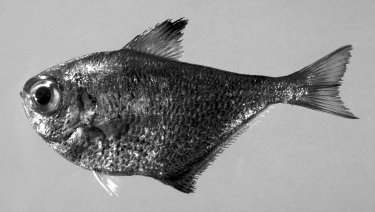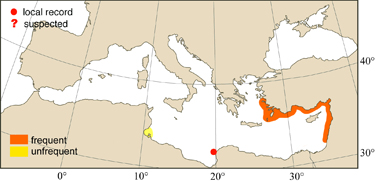
|
Relevant synonyms
Misidentification
Meristic formula
* Note: the family of Pempheride is great need of classification studies. |
|
| photo : David Darom |
|
SHORT
DESCRIPTION
color :
body brown bronze. Tip of dorsal fin black. Base of anal fin often black. size : common 5-16 cm (max. 18 cm). |
DISTINGUISHING CHARACTERISTICS
BIOLOGY / ECOLOGY
habitat : day-time: caves and crevices, to depth of 20 m. At night: inshore pelagic. |
|
1st
MEDITERRANEAN RECORD
|

|
|
DISTRIBUTION
|
ESTABLISHMENT SUCCESS
speculated reasons for success :
|
|
|
MODE OF
INTRODUCTION |
IMPORTANCE TO
HUMANS |
|
KEY
REFERENCES
|
|
 Pempheris molucca
Pempheris molucca